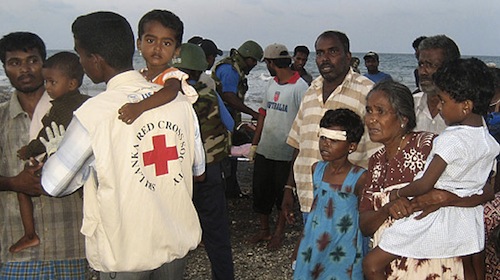Given the current situation in the Philippines, aid workers are very much in the news. But what exactly do they do? And how does one become an aid worker?
First off, it’s probably important to realize that humanitarian aid field workers is actually a little bit of a growth industry: the number of people doing that kind of work has increased six percent per year for the past decade; there are probably somewhere around 230K in the world right now. There are various resources on getting a job in the field: here, here and here. ReliefWeb is a common spot to find jobs. While the notion of the core functions of the job can be very romantic, oftentimes the reality is less so. It’s also a somewhat-to-very dangerous job.
While this Reddit AMA was ultimately removed due to the proofing elements, it’s still an interesting read. There’s this piece from NPR about the rescue of aid workers from Somali pirates, and here’s another take on it. 60 Minutes also did a piece on it:
This is a great collection of stories about different experiences that aid workers have had, from building homes in Kosovo to serving as an engineer on Greenpeace’s Rainbow Warrior ship. Forbes has a diary from an international aid worker in Jordan, and entities as varied as The Borgen Project, HelloGiggles, and Good Morning America have profiled ‘a day in the life’ of the work.
Why do they serve? Often to chase the idea of ‘making a difference’ or providing a better future for children:
Here are some video diaries from aid workers in Haiti, still there three years after the destruction. They speak to the why of their involvement:
Here, Dr. Omar Saleh — a trauma surgeon working as an aid worker in Somalia — explains his motivations. He opens with something very simple and basic: “This is where I should be.”
And finally for this video rip, Journeyman Pictures made a documentary about aid workers. You can view that below.
My generally-uninformed take: right out of college, I did Teach for America; I was a second and third grade teacher in Houston, TX. I wasn’t very good at it — maybe you could argue my second year was a bit better than my first — and a lot of times when I look back on it, I wonder if I did more harm than good for the kids in my different classes. Doing TFA, as a white kid from the Upper East Side of Manhattan by way of a top 25 college/university, is kind of about 1/114th the impact of being an international aid worker. I had periods of my life when I thought about the idea of doing aid work — I did, and I have, etc. — but I never actually did it because sometimes it can seem the workers are entering just as vulnerable, if not more vulnerable, than those they’re trying to help. The system, if you will, doesn’t seem set up for success. Many people will argue all over the Internet that the system of TFA isn’t set up for success either, but that’s like comparing apples and dolphins. It’s not even the same shit. Teach for America has a training process, and decently-well-compensated staff who worked in those schools themselves, etc. Being an aid worker can just be terrifying.
Looking forward to an age of faster pipelines and less red tape, when aid workers will get satellite images they need in hours, not days.
— Charlie Loyd has quit this site (and you can too) (@vruba) November 12, 2013
These people are, quite literally, doing God’s work in the face of tremendous obstacles and threats. I 1000% commend them.
